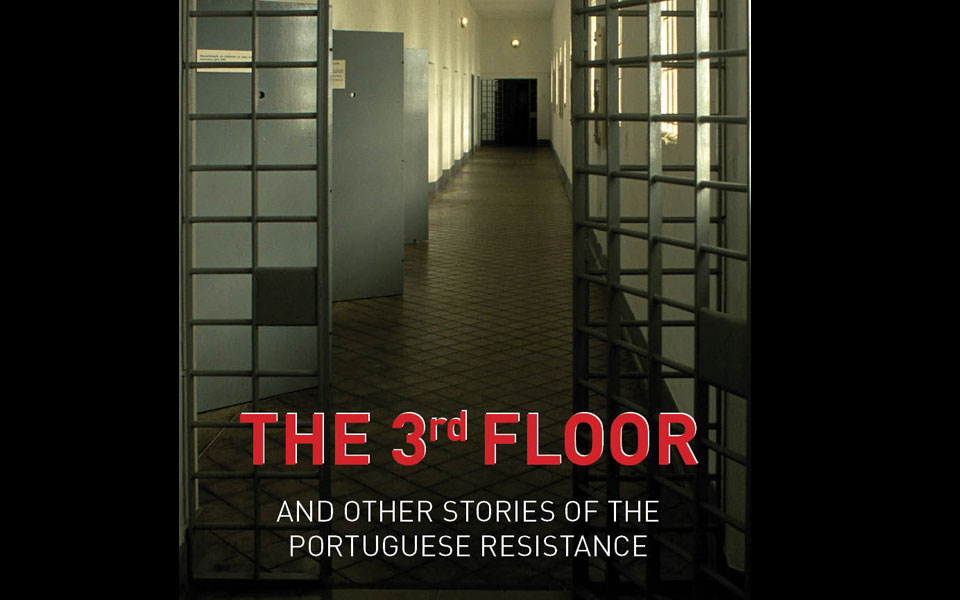
This exciting collection is a first-and-only translation consisting of four stories: “An Uncommon Education,” “The 3rd Floor,” “Struggle and Life,” and “The Vargas Case: Death of a Landlord.” For the benefit of those monolingual, English-speaking readers who may never have considered what translation is and what translators do, before reviewing each of these stories, I feel compelled to comment on literary translation and on this translation in particular.
The relationship between an author, a translator, and a reader of a translation is paradoxical. The best translations obscure the phenomena involved in the successive intellectual and creative feats of the work, and in so doing, their success renders the translator invisible. To remedy that, as a literary translator myself, I propose that not enough praise can be lavished on Eric Gordon for his lively English translation from Portuguese.
That these stories are translated is obvious. The translator is named on the cover and he wrote the foreword. However, his superb command of every register of U.S. English ought to be apparent to any reader who will take the time and make the effort to step back and marvel at the smooth flow of the translation. He exploits an unstrained range of American English colloquialisms, by which I refer to the fact that they do not jar the reader by seeming forced or unnatural, out of place, or, in the case of dialogue, out of character.
For this and other reasons, I urge readers to occasionally pause with due reverence for Gordon’s having made the grueling work of literary translation seem as if were a trifle. Producing a great translation may be compared to the work of a master chef: the hard work in the kitchen is not witnessed by the guests. They see and enjoy that work when the plates are served.
Only after having given Gordon his due is it appropriate to present my observations about these stories by Manuel Tiago, the pen name of Alvaro Cunhal (1913-2005).
I have reviewed other works by Tiago and found them all engaging and intriguing. They expose the hidden world of the Portuguese resistance to fascist rule in Portugal.
My experience as a reader of this collection was more exciting and suspenseful than the works by Tiago I have read thus far—and more are coming, so stay tuned. I could not put the book down as I read the four stories, each in one sitting. Each of them is a page-turner. Perhaps more important than their literary brilliance to the future of resistance to fascism, which is darkening our door at this time, is the instructional value the stories have, each in its own ways, regarding the means and methods by which clandestine resistance is conducted. Regarding their potentially instructional value, aside from their literary worth, in his foreword to this collection, Gordon observes:
“The fact that Tiago brings us into that clandestine world, so closely, so intimately, and leaves for us the legacy of that time and the demands it made on committed militants, outweighs—for me—any perceived literary lapses. If the time should ever come, anywhere, when this level of organized underground resistance is called for, then pick up these books and study how it was once done” (ix).
Readers should keep in mind that these are short stories. As such, character development is generally subordinated to plot and the memorability of the impact it has on readers. This is consistent with the principles of traditional short-story writing as invented by Edgar Allan Poe. His classic piece The Poetic Principle also focuses on brevity and impact in poetry, but this principle is clearly applied in his famous tales. One principle, unity of effect, requires that every detail must, from the beginning of a short story, contribute to its conclusion. For this reason, the characters in short stories can often seem two-dimensional—meaning that they don’t really learn anything in the course of the story, as main characters in novels can, simply because there isn’t enough time for them to evolve in ways that are believable to readers.
In the first of the four stories, “An Uncommon Education,” Miguel is a young man who emerges as the main character, becomes a Party member at the end of the story, and begins a life of working clandestinely. His transformation seems unintentional but sincere, even necessary and inevitable. He frequently visits the home of the Pereira family in Lisbon. The family seems ordinary enough until you realize that everyone in the household goes about their business a little too well so as to be above suspicion. Miguel’s political transformation goes hand-in-hand with the development of his relationship with Sofia, one of Antonio Pereira’s two daughters.
Midões, Miguel’s father, forbids Miguel to have anything to do with this ostensibly normal family. Midões is a shadowy figure who arouses fear and suspicion and comes and goes for lengthy periods of time. He seems to have no apparent job and clearly is keeping watch on the Pereira household and all who come and go. His prohibition becomes increasingly violent. He beats Miguel so severely that he is taken to the local hospital. When two nurses are confronted by agents of the Polícia Internacional e de Defesa do Estado, or International and State Defense Police (PIDE), they attempt to help him slip out the back. The plan goes afoul and he is picked up and taken away to PIDE headquarters, where he is given a “sample” of the tortures he can expect if he continues to associate with the Pereira family. The reader will not need to put two-and-two together to realize that Miguel’s own father is behind this treatment. His torturers declare it to him proudly: “It was your daddy who recommended giving you just a demonstration” (19). No reader can be surprised that the tortures cause a definitive break from his father.
The remainder of the story relates how these events lead to his joining Sofia into a life of clandestine resistance.
The title story
The title story, “The 3rd Floor,” is a short thriller, a vividly memorable account of a daring escape from an unnamed prison in Lisbon. (A brief reference in the third story, suggests that it was most likely the Aljube Prison.) The first five pages are spent presenting the colorful cast of characters and the layout of the 3rd floor. These are important pages because there are a lot of interpersonal dynamics and details about the layout of the prison which will be important to understand how a small group manages to escape, mystifyingly into thin air.
There are two classes of prisoners—those on the floor and a handful of more inscrutable ones in a separate part of the floor, known simply as the Room. This distinction is exploited in numerous ways by prisoners’ conversations, suspicions, and conflicts as well as by the narrator. These first few pages reveal the types of tensions one would expect, such as concerns about the ability of the communist prisoners to communicate with the Party on the outside, in part by ciphered speech during family visits. Naturally, the sadistic character of guards is shown throughout. But this initial tension is overlayered and gradually overshadowed by the building suspense of the possibility of escape.
This story is a roller coaster of suspense as the prisoners are beset by doubts about their plan, its logistics and timing, problems with communicating with the Party outside, and suspicions about other prisoners in the Room. Naturally, the reader is rooting for them all the way.
Struggles in forced hiding
There is a brief preface to the third story, “Struggle and Life,” written by Cunhal himself in his own name. In it, he relates that he “started writing individual episodes of the Party’s struggles in forced hiding” (69). This story lives up to that intention. It shows the ways in which Party members had uprooted their lives, out of commitment and the necessity to evade capture by the PIDE. At first, the idea that I was about to read about the daily lives of Party members in forced hiding seemed unpromising and humdrum, but I felt quickly rewarded. The walls surrounding that hidden world were peeled back. Their intimacies, worries, and concerns, such as any people have, are intensified by the realities of their lives as Party members engaged in struggles that could be lethal.
The storyline follows the lives of Leonel and Constança as they move from safe house to safe house, interacting with and integrating themselves into the communities where Leonel is active in organizing strikes in a number of factories. Their interactions with other cells of the Party and the manner in which they arrange contacts are quite interesting and worth every minute of this fast-paced story.
Despite their seeming success at being accepted—they even acquire a dog and keep a garden—Leonel and Constança constantly live on the margin of society. At times they are forced to flee because the PIDE is dangerously close to taking them into custody. They have to rapidly gather all evidence of Party activity in the house, such as the newspaper Avante!, personal writings, correspondence, and so forth, and make quick arrangements for another safe house.
The struggle for the Party’s causes takes a toll on their lives, hence the title. Constança is excluded from most Party discussions, which are strongly dominated by the men. By showing, not telling, the author makes it clear that although she is not a Party member, sexism does have something to do with her being excluded.
What happens next is interesting and highlights the ways in which, in the struggle, mission is more important than individuals’ lives, yet lives must be lived and be believable: the Party doesn’t miss a beat in replacing Constança with Ruth, a new partner for Leonel. The Party sends him on a new and bigger assignment far away where he and Ruth again appear to integrate themselves into a new community exactly as Leonel and Constança had done before.
Finally, “The Vargas Case: Death of a Landlord” concludes the collection. Outwardly, it is a parody of a detective story. However, upon closer examination—or contemplation—it is a valuable case study of how, in the absence of organized forces of change, the capitalist system will reassert itself after the death of anyone who might have seemed to be its incarnation and without whom some might naïvely believe that their lives would improve.
As one who loves detective fiction, in print and in movies, this story had me laughing out loud at the ways in which the GNR (regular police, not the PIDE) were bungling their investigations into the murder of Vargas, a large landowner, who constantly found ways to acquire more land and keep people working for him in debt. There were plenty of worthy suspects. For instance, Vargas had abused a young girl and her father was an obvious suspect. One police officer comments that even though one person must have fired the shots, the whole village killed Vargas—an interesting observation, given the abuses by the landlord. Despite their bungling investigations, amid accusations made by the widow, and a sense of defeat by one of the police officers, it is decided by the GNR bosses that someone must be punished. After the case is resolved (thanks to the people, not the police), the dead landlord’s family steps in to reassert themselves and the exploitative rural life reverts to what it was before.
Since the social and economic order are restored at the end, this story reminded me of Fuenteovejuna, a famous play from the Spanish Golden Age by the prolific playwright Lope de Vega. In this 17th-century play, the whole village claims to have murdered the abusive Comendador, the landowner, when the Queen rides into town to take control of the situation. In this instance of deus ex machina (or, more properly, regina ex machina) and unlike what happens in the last story in this collection, no specific killer or killers would be identified. Even under torture, when asked, “Who killed the Comendador?” the villagers all responded, “Fuenteovejuna did it!” In its time, the play was an encomiastic piece for royal power in that it brought to mind and celebrated how Isabel had consolidated the fiefdoms of local lords in the late 15th century and created the first modern state in Europe. Interestingly, when this play was performed in the USSR, the final scene was omitted. It ended with the death of the Comendador, thus converting the play into an example of popular revolution against the abusive, landowning classes.
This is a book to read and better still, to share with others. As Gordon has done in his other translations, he has included thought-provoking questions for self-study which also would stimulate valuable discussion in a book club.
The 3rd Floor and Other Stories of the Portuguese Resistance
By Manuel Tiago (Álvaro Cunhal)
Translated by Eric A. Gordon
New York: International Publishers, 2021
160 pp., $19.99
ISBN 9780717808717
Order your copy here.












Comments